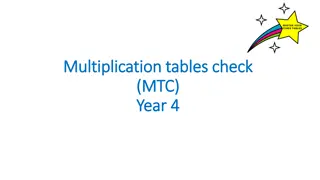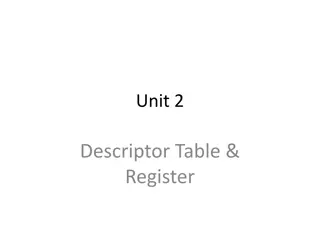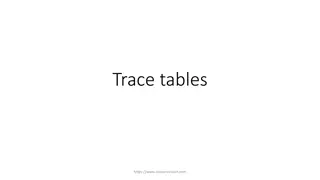Guidelines for Describing and Interpreting Tables and Figures in Academic Writing
Learn essential steps to effectively describe and interpret tables and figures in academic writing. Understand how to analyze data, interpret trends, and avoid biases. Gain insights into the anatomy of tables and figures, enabling clearer communication of research findings.
Download Presentation

Please find below an Image/Link to download the presentation.
The content on the website is provided AS IS for your information and personal use only. It may not be sold, licensed, or shared on other websites without obtaining consent from the author.If you encounter any issues during the download, it is possible that the publisher has removed the file from their server.
You are allowed to download the files provided on this website for personal or commercial use, subject to the condition that they are used lawfully. All files are the property of their respective owners.
The content on the website is provided AS IS for your information and personal use only. It may not be sold, licensed, or shared on other websites without obtaining consent from the author.
E N D
Presentation Transcript
Describing and Interpreting T Describing and Interpreting Tables and Figures Modibo SANGARE, M.D., Ph.D., Associate Professor University of Sciences, Techniques and technologies of Bamako (USTTB) July 4th-6th, 2023 AFREhealth manuscript writing English Course 2 8/7/2024 1
Take a guess 8/7/2024 2
Rationale 8/7/2024 3
Describing and Interpreting a Table Describing and Interpreting a Table 1. Read the title, which is always before the table itself. 2. Read through the first row (at the top) and the first column (on the left) 3. Scan the content for trends (increasing, decreasing, the highest or the lowest, no change). You pay a close attention to frequency and percentage You compare (using comparative and superlative of adjectives) 4. Don't use your own general knowledge either to explain or to add more information to the data. 8/7/2024 4
Anatomy of a Table 8/7/2024 5
8/7/2024 6
What do you think of this table? 8/7/2024 7
Describing and Interpreting a Describing and Interpreting a Figure Figure 1. Read the title, which is usually below (after the figure). 2. Look at the headings and units used 3. Read the labels (on X axis and Y axis). 4. Then study the figure figure to understand what it shows. - pay a close attention to the peak (s) - pay a close attention to the curves (dose- reponse) https://sciencing.com/proper-way-label-graph-5195234.html 8/7/2024 8
Anatomy of a Figure 8/7/2024 9
Figure 8/7/2024 10
Figure 8/7/2024 11
A question for a champion: What is this figure about? 8/7/2024 12
This is universal. We eat three meals a day. 7 AM 12 PM 5 PM Note: Late Evening Snack (L.E.S) is at 9 PM. 8/7/2024 13
A graph A graph 1. Read the title, which is usually placed in the center, either above or below the graph. 2. Look at the keys, - Typically in a box next to the graph. - To explain symbols and colors used in the graph. 3. Read the labels. 4. Then study the graph graph to understand what it shows. https://sciencing.com/proper-way-label-graph-5195234.html 8/7/2024 14
Different forms for the same purpose: present data 8/7/2024 15
In Sum Tables (to present raw data) versus Figures (to show relationship) 8/7/2024 16
8/7/2024 17
Thank You 8/7/2024 18























